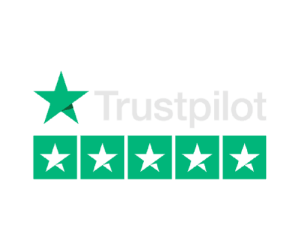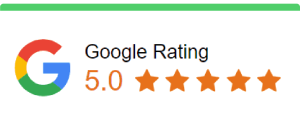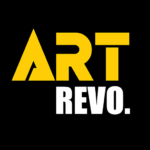Introduction: Why Art Needs SEO Today
In today’s digital landscape, the visibility of art, whether physical or digital, hinges not only on talent but also on understanding how Google‘s algorithm prioritizes content. As galleries transition to virtual exhibitions and artists increasingly showcase their artwork online, mastering the logic behind Google‘s AI-driven search engine has become vital. With algorithmic changes reshaping the art world’s digital exposure, understanding the underlying technology, tools, and logic of search visibility is now as critical as curating a compelling portfolio.
Search engine optimization (SEO) is no longer just a technical tool for marketers—it has become a foundational necessity for creative professionals. For digital creators, artistic entrepreneurs, and algorithmic artists, SEO is an extension of visibility, allowing their visual creations to appear in front of an audience actively searching for innovation, creativity, and artistic experiences. Whether it’s DeepDream-inspired abstract visuals or a unique generative sequence, positioning your creative output correctly ensures it doesn’t disappear in the noise of the web.
How Google’s Algorithm Understands Art-Related Queries
The Evolution of Search Understanding
Google’s algorithm has evolved from basic keyword-matching to complex semantic analysis. It interprets the intention behind user queries such as “AI abstract painting process” or “neural art style generator” by employing natural language processing through models like BERT (Bidirectional Encoder Representations from Transformers) and MUM (Multitask Unified Model).
This evolution means that search engines now analyze the structure, meaning, and context of content. For the art world, this shift requires creators to contextualize their works in terms that are readable and interpretable by AI. This includes precise tagging, meaningful image descriptions, and enriched metadata around the artistic process and creation tool used.
Visual Queries and Multimodal Understanding
Tools like Google Lens allow users to search with images instead of text. As this becomes increasingly popular, Google’s systems are trained to recognize not just objects but styles, art forms, and even thematic elements. This means that an uploaded image of a fantasy landscape painting may return search results including generative art pieces with similar color palettes, composition, or techniques.
Google uses multimodal algorithms that combine textual, visual, and even auditory signals. For art-related content, the algorithm doesn’t just match words—it decodes visual structure, abstract elements, and style markers like “cubist,” “digital surrealism,” or “code-generated portrait.”
AI and Machine Learning in Search: From DeepDream to Visual Recognition
DeepDream and the Origins of Visual AI
In 2015, DeepDream showed the world how computers could “hallucinate” images. What began as an experiment in visualizing how neural networks process information became a cultural moment for algorithmic art. These networks generated intricate patterns by enhancing and modifying features within images—laying the groundwork for AI art as we know it.
Today, DeepDream serves as a conceptual foundation for many AI-driven tools used by artists. Its role in shaping how machines “see” makes it foundational to understanding how Google identifies, interprets, and ranks artistic visuals.
Neural Networks and Artistic Categorization
Machine learning systems trained on large image datasets can now differentiate between types of artwork, even recognizing artist-specific styles. Through convolutional neural networks (CNNs), Google’s systems detect features such as brushstrokes, color arrangements, and symmetry.
These insights are critical for creators using AI models such as DALL·E, Midjourney, or Stable Diffusion. While the creative process may be algorithmic, the presentation must still be framed with coherent descriptions, contextual information, and instructional cues to help Google assign relevance.
Decoding Algorithmic Signals: What Matters for Art Visibility
Key Ranking Signals
- Title & Meta Description: Incorporate terms like “AI-generated portrait,” “fantasy digital canvas,” or “abstract neural drawing.”
- URL Structure: Descriptive URLs such as
/art/algorithmic-creationsoffer context. - Alt Text & Captions: Google still relies heavily on text to understand image meaning.
- Structured Markup: Implement
VisualArtwork,ImageObject, orCreativeWorkschemas to assist with classification.
Importance of Page Architecture
- Use H1-H3 headers to create a semantic flow of ideas.
- Embed related terms like “instruction chain,” “code-to-canvas,” or “visual generation.”
- Link to related tools, code, and artist statements to increase relevance.
Content Refresh and Technical Optimization
Keeping a dynamic site with periodic updates, optimized load speeds, and mobile-friendly layouts ensures that Google’s crawlers prioritize your content over stagnant, poorly structured pages.
Visual Content Optimization: Metadata, Structure & AI Readability
Filename, Alt Text, and Captioning Best Practices
Google still cannot fully interpret raw image files without metadata. Here’s how to guide the algorithm:
- Filename:
ai-algorithmic-fantasy-portrait.png - Alt Text: “Algorithmically generated abstract painting featuring neural sequences and fantasy-inspired patterns.”
- Caption: “This artwork was created using a custom-trained GAN to explore the intersection between dream logic and visual sequence.”
Use of Instructional Context
Explain your creative workflow:
- Did you use GANs or VQGAN+CLIP?
- Was your piece a prompt-based creation or part of a trained style transfer process?
Google rewards transparency in methodology because it matches users’ instruction-based queries like “how to make AI art with prompts” or “training a model for visual abstraction.”
The Role of AI-Generated Art and Algorithmic Expression in Rankings
Differentiating Algorithmic from Generic Content
Google penalizes low-quality or automatically scraped AI content, but not algorithmic art with strong human intention. The key is to demonstrate that your AI-generated artwork is part of a thoughtful process:
- Include step-by-step explanations
- Mention the tools, code, or models used
- Clarify your intended artistic outcome
Relevance to Search Queries
- Label your work with genre tags like “surreal fantasy,” “pixelated portraiture,” or “AI dream sequence.”
- Use contextual language around concepts like “exploration of identity through neural abstraction.”
These practices make your page more aligned with algorithmic goals of relevance, specificity, and engagement.
Building Your Artistic Digital Footprint: Web, Social, and Schema
Implementing Schema
Using structured data improves visibility:
VisualArtwork: Describes the image, style, and creation processPerson: Describes the artist or collaborative AI entityExhibitionEvent: If the piece was part of a showVideoObject: If the artwork includes motion or walkthroughs
{
"@context": "https://schema.org",
"@type": "VisualArtwork",
"name": "Mystery of Creation",
"creator": {
"@type": "Person",
"name": "Neural Artisan"
},
"artform": "Algorithmic AI Painting",
"description": "Created using a custom-trained GAN on a fantasy sequence dataset."
}Leveraging Social & External Signals
- Link to your Behance, ArtStation, or GitHub repos for algorithmic tools.
- Use Pinterest boards with thematic sequences (e.g., fantasy, abstraction, structure).
- Cross-publish educational content: explain how a particular model or input structure led to a specific output.
Real-World Examples of Visibility Growth (Anonymized)
- An experimental artist documenting prompt engineering and linking code repositories gained 12x organic impressions.
- A collective gallery featuring AI artists used schema and multilingual metadata to rank globally.
- A digital artist showcased a blog series comparing generative outputs from different models, each entry embedded with schema, video, and gallery walkthroughs.
What Google’s Algorithm Updates Mean for Artists in 2025
Growing Emphasis on Originality and Context
The latest updates favor creators who:
- Show methodological transparency
- Use semantic-rich explanations
- Demonstrate artistic intention even when using AI tools
Rise of Personalization and AI Summaries
With AI-generated summaries and featured snippets, Google is now delivering art content in preview formats. Artists must:
- Ensure their metadata is clean and well-structured
- Include short, impactful summaries of their art pieces
Beyond Static Web: Interactive Content Matters
- Embedding interactive visualizations, dynamic walkthroughs, and timelapse videos can enhance your ranking
- Google’s algorithm increasingly interprets engagement signals from users interacting with embedded content
Frequently Asked Questions (FAQs)
1. How does Google recognize different styles of art in search results?
Google uses machine learning and visual recognition models trained on massive datasets to identify patterns, styles, and features such as brushstrokes, color arrangements, or symmetry. Schema markup, image metadata, and descriptive context further help classify the style and relevance of artwork.
2. Does using AI to generate art reduce my ranking potential?
Not necessarily. Google evaluates intent and quality. If the AI-generated content is unique, well-documented, and includes relevant context, it can perform well. Penalization occurs only for low-quality, spammy, or purely autogenerated content lacking human insight or value.
3. What metadata should I add to my images to help Google index them?
Include:
- Descriptive filenames
- Alt text that explains both content and intent
- Captions that reinforce context
- Structured data (e.g.,
VisualArtwork,ImageObject)
4. How important are backlinks for ranking my art portfolio?
Backlinks from reputable sources—such as art magazines, institutions, or popular platforms like Behance—are crucial. They signal trust and authority to Google, improving your visibility and ranking potential.
5. Can interactive or video content help my art rank higher?
Yes. Google increasingly values interactive formats and rich media like video walkthroughs, timelapses, and AR/VR presentations. These formats increase user engagement and reduce bounce rates—both strong ranking signals.
Conclusion: Visibility as an Artistic Medium
As the digital art world becomes increasingly intertwined with algorithmic intelligence, visibility is no longer a passive outcome—it is an active part of the artistic process. Understanding how Google’s algorithm interacts with your content allows you to shape how your audience discovers, experiences, and interprets your work.
From optimizing metadata to embedding structured data and documenting your creative journey, the tools at your disposal empower you not only to create, but to be seen. The convergence of AI, creativity, and search technology opens new frontiers of artistic discovery. Artists who embrace this fusion—not just with pixels and prompts but with clarity and structure—will lead the way into a more discoverable, connected, and algorithmically aligned art world.
In 2025 and beyond, crafting art for the web means mastering the mystery and sequence behind how content travels across digital space. The fantasy of discovery becomes real when you understand the code that powers it.



